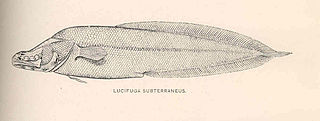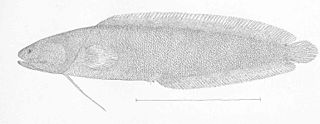| Ungusurculus | |
|---|---|
| Scientific classification | |
| Kingdom: | Animalia |
| Phylum: | Chordata |
| Class: | Actinopterygii |
| Order: | Ophidiiformes |
| Family: | Bythitidae |
| Tribe: | Dinematichthyini |
| Genus: | Ungusurculus Schwarzhans & Møller, 2007 |
| Type species | |
| Ungusurculus riauensis Schwarzhans & Møller 2007 | |
Ungusurculus is a genus of viviparous brotulas found in the western Pacific Ocean.
A genus is a taxonomic rank used in the biological classification of living and fossil organisms, as well as viruses, in biology. In the hierarchy of biological classification, genus comes above species and below family. In binomial nomenclature, the genus name forms the first part of the binomial species name for each species within the genus.

The viviparous brotulas form a family, the Bythitidae, of ophidiiform fishes. They are known as viviparous brotulas as they generally bear live young, although there are indications that some species do not. They are generally infrequently seen, somewhat tadpole-like in overall shape and mostly about 5–10 cm (2–4 in) in length, but some species grow far larger and may surpass 60 cm (2 ft).

The Pacific Ocean is the largest and deepest of Earth's oceanic divisions. It extends from the Arctic Ocean in the north to the Southern Ocean in the south and is bounded by Asia and Australia in the west and the Americas in the east.


